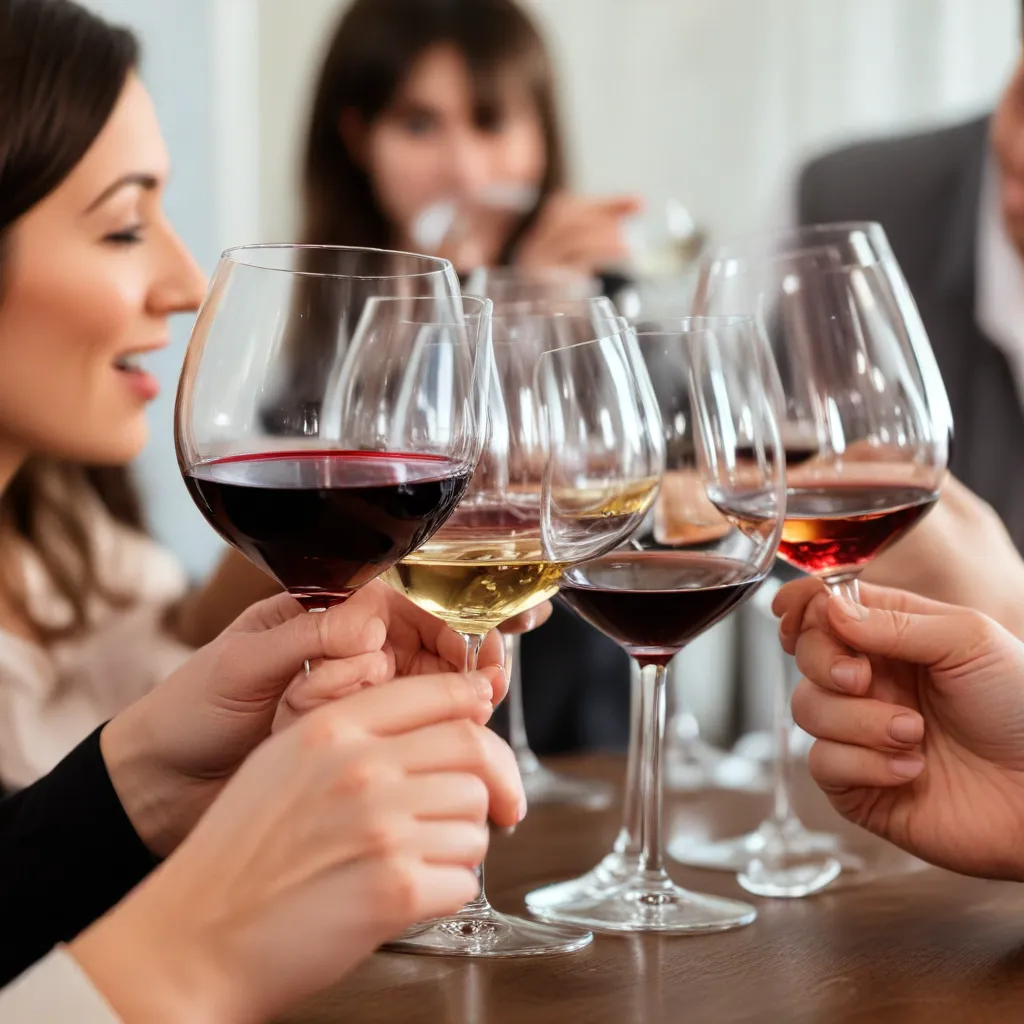
Mastering the Art of Wine Tasting: Identifying Subtle Flavor Nuances
As a hospitality and wine expert writing for the Wine Garden Inn, I’m excited to share insights on the intricate art of wine tasting. While it’s common for wine enthusiasts to be captivated by bold, obvious flavors, uncovering the more subtle nuances within a glass can truly elevate the tasting experience.
Sensory Perception in Wine Tasting
The process of wine tasting involves engaging all of our senses – sight, smell, and taste – to fully appreciate a wine’s unique character. Let’s explore each of these sensory aspects in detail.
Visual Analysis: Before even taking the first sip, we can glean valuable information from a wine’s appearance. The color, opacity, and viscosity of the liquid can provide clues about the wine’s age, grape variety, and even winemaking techniques. Swirling the glass allows us to observe the “legs” – the streaks that cling to the sides, which indicate the wine’s alcohol content and body.
Olfactory Evaluation: The nose is arguably the most crucial component of wine tasting. By gently swirling the glass and taking deep, deliberate inhalations, we can detect a vast array of aromatic compounds that contribute to the wine’s bouquet. These can range from vibrant, fruity scents to delicate floral notes and warm, spicy undertones.
Gustatory Exploration: Finally, the moment of truth – tasting the wine. As the liquid hits our palate, we can discern various flavor profiles, acidity levels, and tannin structures that create the wine’s overall balance and mouthfeel. The finish, or the lingering taste that remains after swallowing, also plays a vital role in our assessment of the wine.
Flavor Nuances in Wine
While many wine enthusiasts may be drawn to the bold, in-your-face flavors of certain wines, the true art of wine tasting lies in identifying the more subtle, yet captivating, nuances that emerge from the glass. Let’s delve deeper into some of these flavor complexities.
Aromatic Compounds: Beyond the common fruit-forward aromas, wines can exhibit a vast array of scents that contribute to their unique character. Fruity aromas can range from the bright, citrusy notes of grapefruit or lemon to the riper, jammy notes of blackberry or plum. Floral scents, such as rose, violet, or jasmine, can add a delicate, ethereal quality. Meanwhile, spicy notes of cinnamon, clove, or black pepper can lend a warm, intriguing complexity.
Taste Profiles: While acidity provides the backbone and tannins offer structure, the interplay of these elements with the wine’s fruit concentration and alcohol content creates the overall balance and mouthfeel. Some wines may exhibit a zesty, refreshing acidity, while others showcase a smooth, velvety texture. The range of body, from light and delicate to full and robust, can also significantly impact the wine’s personality.
Varietal Characteristics
Understanding the unique characteristics of different grape varieties is essential for deciphering the subtle nuances in a wine. Let’s explore a few of the most renowned grape varieties and how they typically present themselves in the glass.
Red Wine Varieties:
– Cabernet Sauvignon is known for its bold, structured presence, often exhibiting notes of black fruit, leather, and tobacco.
– Merlot tends to be softer and more approachable, with ripe, plummy flavors and a velvety texture.
– Pinot Noir can showcase a delicate, ethereal character, with red fruit aromas and a silky mouthfeel.
White Wine Varieties:
– Chardonnay can range from crisp, unoaked versions with citrus and green apple notes to richer, barrel-aged styles with buttery, vanilla-tinged profiles.
– Sauvignon Blanc is renowned for its vibrant acidity and herbaceous, grassy aromas, often with hints of grapefruit or gooseberry.
– Riesling can exhibit a spectrum of styles, from bone-dry and mineral-driven to lusciously sweet, with flavors ranging from green apple to stone fruit.
Tasting Techniques
Mastering the art of wine tasting requires a combination of practiced techniques and an open, inquisitive mindset. Let’s explore some key strategies to enhance your wine tasting experience.
Swirling and Aeration: Gently swirling the wine in the glass helps to aerate the liquid, releasing the aromatic compounds and allowing the wine to “open up” and reveal its full complexity. Utilizing the appropriate glassware can also contribute to the aeration process, with the shape and size of the glass influencing the wine’s interaction with oxygen.
Decanting and Breathing: For older, tannic red wines, the process of decanting can be particularly beneficial. By carefully pouring the wine into a decanter, you can separate the clear liquid from any sediment that has accumulated over time. This not only enhances the wine’s visual appeal but also allows it to “breathe,” softening the tannins and unlocking additional layers of flavor.
Descriptive Analysis: When tasting a wine, it’s important to approach it with an open and curious mindset. By focusing on identifying the specific flavors and aromas present, you can begin to unravel the wine’s unique personality. Pay attention to the wine’s intensity, balance, and complexity, as these elements can provide valuable insights into the quality and character of the wine.
Whether you’re a seasoned wine enthusiast or a curious newcomer, mastering the art of wine tasting can be a truly rewarding and enlightening experience. By engaging all of your senses and delving into the subtle nuances of each wine, you’ll unlock a world of flavors, aromas, and textures that will continue to captivate and delight you. So, grab a glass, breathe deeply, and let your palate be your guide on an oenological adventure.
